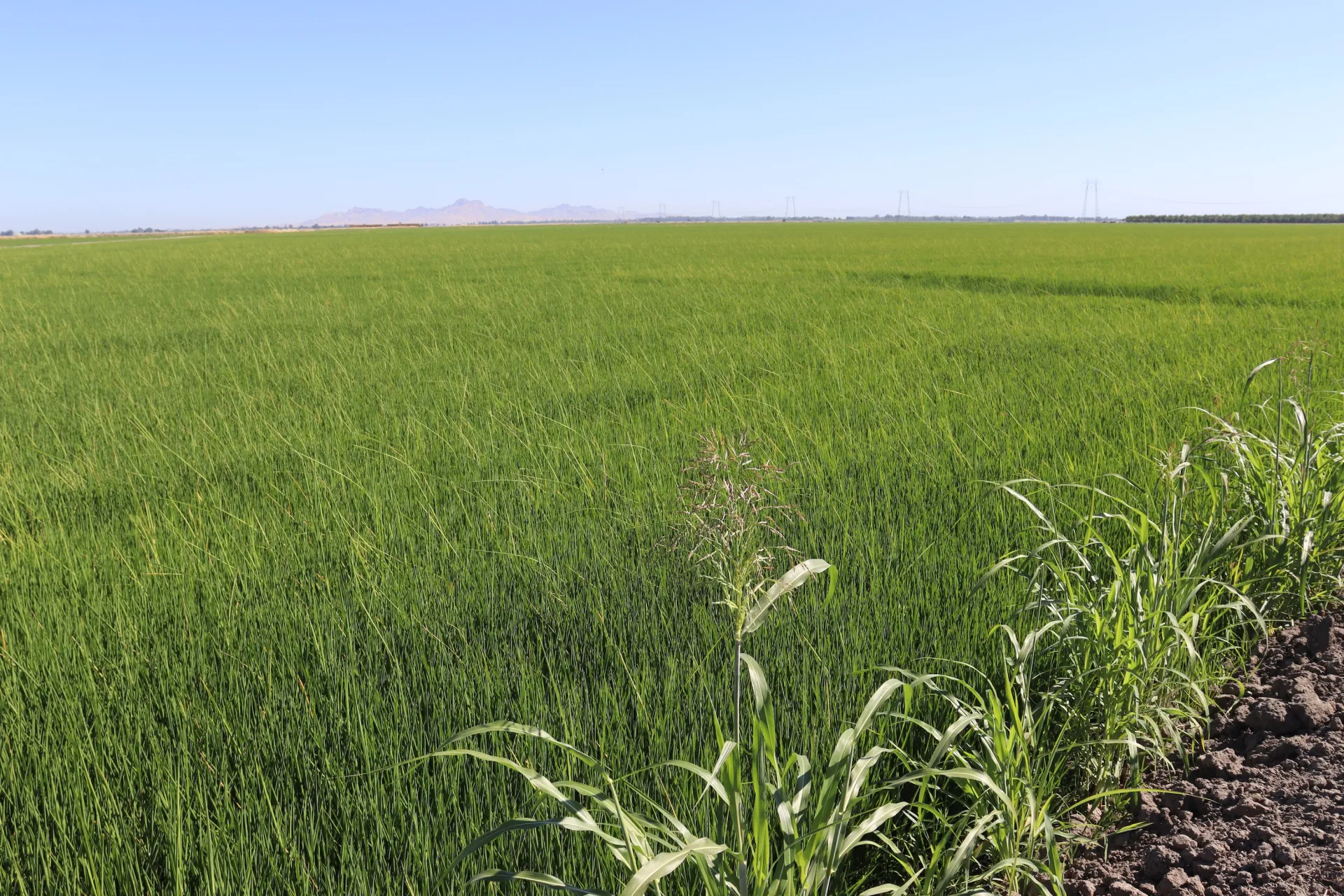In the past few years there has been a steady increase in the incidence of bakanae in the field. Fortunately, the levels of infection we have seen have not resulted in yield reductions. However, talking to those that worked on developing the bleach treatment after bakanae was identified in California, there were fields in which bakanae infection resulted in a yield reduction before the bleach treatment was available. So it can happen.
I have gotten some calls about fields with heavy bakanae this year. In all cases, the seed was soaked with bleach. While it is not uncommon to see some bakanae even after treatment, the incidence level these fields show looks more like fields seeded with untreated seed.
So why are we seeing more bakanae in the past few years? Here’s some possible answers:
- Seed was not treated. I have heard from some warehouses that sometimes the seed buyer requests that the seed not be treated. This could be because the field to be planted is organic or trying to reduce seed cost.
- Seed was treated but could not be flown timely. There have been cases where the drained, treated seed sat in the truck for some time, from hours to a day. When this happens, the seed warms and any surviving bakanae will produce more spores and result in increased incidence in the field.
- Seed was treated but the chlorine concentration was not high enough. The recommended available chlorine concentrations are 1500 or 3000 ppm, if the soak is done for 24 or 2 h, respectively. The sodium hypochlorite concentration of registered products can be quite different, so the amounts to be added to the soak water can vary with product. The best way to ensure that the right concentration is reached is to check it. This can be done with test strips. I have not used them but here are a couple of examples of test strips that can be used to check up to 2,000 ppm and 10,000 ppm of available chlorine.
- Bakanae is becoming tolerant to the bleach treatment. This is unlikely, but there are cases of fungi developing tolerance to sodium hypochlorite treatments.
Another concern regarding bakanae is its capacity to survive in soil after a field is planted with infected seed. The bakanae pathogen is not very good at surviving in the soil. I have seen fields that had high levels of infection one year and the following year were clean. If the bakanae is spread out randomly throughout the field, it means it came with the seed. If infected plants were concentrated in irregular patches in the field, it might indicate soil infection.


